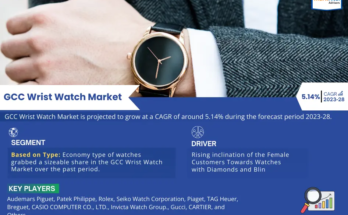The Anti Cancer MAbs Global Market Report 2023, provides comprehensive information on the anti cancer MAbs market across 60+ geographies in the seven regions – Asia-Pacific, Western Europe, Eastern Europe, North America, South America, Middle East, Africa for the 27 major global industries. The report covers a ten year historic period – 2010-2021, and a ten year forecast period – 2023-2032.
Learn More On The Anti Cancer MAbs Market’s Growth:
https://www.thebusinessresearchcompany.com/report/anti-cancer-mabs-global-market-report
As per The Business Research Company’s Anti Cancer MAbs Global Market Report 2023, the global anti-cancer MAbS market size is expected to grow from $56.27 billion in 2022 to $62.47 billion in 2023 at a compound annual growth rate (CAGR) of 11.0%. The Russia-Ukraine war disrupted the chances of global economic recovery from the COVID-19 pandemic, at least in the short term. The war between these two countries has led to economic sanctions on multiple countries, a surge in commodity prices, and supply chain disruptions, causing inflation across goods and services and affecting many markets across the globe. The global anti-cancer MAbS market size is expected to reach $91.12 billion in 2027 at a CAGR of 9.9%.
Get A Free Sample Of The Report (Includes Graphs And Tables):
https://www.thebusinessresearchcompany.com/sample.aspx?id=9041&type=smp
Product innovations are a key trend gaining popularity in the anticancer mAbs market. Major companies operating in the anticancer mAbs market are introducing more effective and targeted cancer treatments, such as mAbs drugs to strengthen their position in the market. For instance, in May 2022, Roche Holding AG, a Switzerland-based pharmaceutical company launched PHESGO. PHESGO (pertuzumab, trastuzumab, and hyaluronidase-zzxf) is a unique monoclonal antibody (mAb) combination treatment for HER2-positive early breast cancer. It is a subcutaneous (under the skin) injection that combines the two mAbs pertuzumab and trastuzumab with the enzyme hyaluronidase. The addition of hyaluronidase, an enzyme that helps to increase the absorption of the mAbs, allows the treatment to be given subcutaneously rather than intravenously.
The anti cancer MAbs market is segmented:
1) By Type: Murine Antibodies, Chimeric Antibodies, Humanized Antibodies, Other Types
2) By Application: Blood Cancer, Breast Cancer, Lung Cancer, Melanoma, Colorectal Cancer, Liver Cancer, Other Applications
3) By End User: Hospitals, Research Institutes, Other End Users
North America was the largest region in the anti cancer MAbs market in 2022.
The table of contents in TBRC’s anti cancer MAbs market report includes:
- Executive Summary
- Market Characteristics
- Market Trends And Strategies
- Impact Of COVID-19
- Market Size And Growth
- Segmentation
- Regional And Country Analysis
.
.
.
- Competitive Landscape And Company Profiles
- Key Mergers And Acquisitions
- Future Outlook and Potential Analysis
Learn About Us:
The Business Research Company is a market intelligence firm that pioneers in market, company, and consumer research. TBRC’s specialist consultants are located globally and are experts in a wide range of industries that include healthcare, manufacturing, financial services, chemicals, and technology. The firm has offices located in the UK, the US, and India, along with a network of proficient researchers in 28 countries. Through the report businesses can gain a thorough understanding of the market’s size, growth rate, major drivers and leading players.
Contact Us:
The Business Research Company
Europe: +44 207 1930 708
Asia: +91 88972 63534
Americas: +1 315 623 0293
Email: [email protected]
Follow Us On:
LinkedIn: https://in.linkedin.com/company/the-business-research-company
Twitter: https://twitter.com/tbrc_info
Facebook: https://www.facebook.com/TheBusinessResearchCompany
YouTube: https://www.youtube.com/channel/UC24_fI0rV8cR5DxlCpgmyFQ
Blog: https://blog.tbrc.info/
Healthcare Blog: https://healthcareresearchreports.com/
Global Market Model: https://www.thebusinessresearchcompany.com/global-market-model



